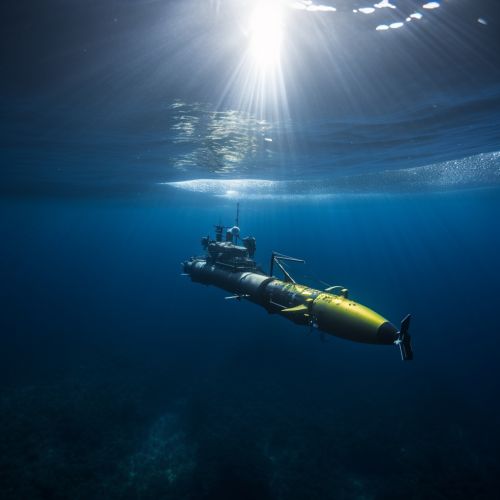Autonomous Robotic Exploration in Oceanography
Introduction
Autonomous Robotic Exploration in Oceanography is a rapidly developing field that uses autonomous underwater vehicles (AUVs) to investigate the world's oceans. These robots are designed to operate independently, without the need for human intervention, and are capable of performing a wide range of tasks, from mapping the seafloor to collecting data on water temperature, salinity, and other oceanographic parameters.


History and Development
The concept of autonomous robotic exploration in oceanography can be traced back to the 1960s, when the first remotely operated vehicles (ROVs) were developed. However, it was not until the late 1980s and early 1990s that the first AUVs were developed. These early AUVs were primarily used for military purposes, but their potential for scientific research quickly became apparent.
Types of AUVs
There are several different types of AUVs, each designed for a specific purpose. Some AUVs are small and lightweight, designed for shallow water operations, while others are large and robust, capable of operating at great depths. Some AUVs are designed for long-duration missions, capable of operating for weeks or even months at a time, while others are designed for short-duration missions, capable of operating for just a few hours.
Applications in Oceanography
AUVs have a wide range of applications in oceanography. They can be used to map the seafloor, collect data on water temperature and salinity, monitor marine life, and investigate underwater geological features. They can also be used to investigate underwater archaeological sites and to search for sunken ships or aircraft.
Challenges and Future Directions
Despite the many advances in autonomous robotic exploration in oceanography, there are still many challenges to be overcome. These include the development of more advanced navigation and communication systems, the development of more robust and reliable AUVs, and the development of more efficient and effective data collection and analysis techniques.
